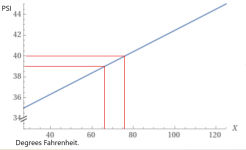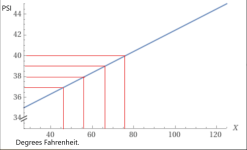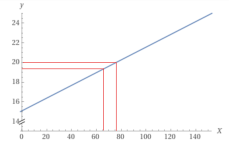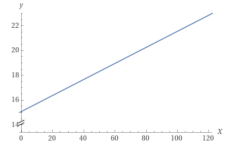If the returns and main drains are capped basically all pipes are still capped from pressure testing I'd say you're safe as long as the pressure testing never involved water.
We made it to gunite... finally!
- Thread starter sll0037
- Start date
You are using an out of date browser. It may not display this or other websites correctly.
You should upgrade or use an alternative browser.
You should upgrade or use an alternative browser.
- Nov 12, 2017
- 12,640
- Pool Size
- 12300
- Surface
- Plaster
- Chlorine
- Salt Water Generator
- SWG Type
- Pentair Intellichlor IC-40
Ah, you beat me to it. I've never seen this done, but my question would have been: did they pressure test with water, or air? If the pipes are only filled with air, then the OP should be fine.If the returns and main drains are capped basically all pipes are still capped from pressure testing I'd say you're safe as long as the pressure testing never involved water.
My second question would have been: when they pressure test with air, could there still be some water in the pipes (which could have gotten inside the plumbing in any number of ways)?
tommelton
Silver Supporter
Mine, in Georgia, were pressurized with water. A leak with water pressurization is easy to find, air, not so much.
- May 23, 2015
- 25,699
- Pool Size
- 16000
- Surface
- Plaster
- Chlorine
- Salt Water Generator
- SWG Type
- Pentair Intellichlor IC-60
All pool plumbing should be tested with water, air is not useful for pressure testing.
To the OP - I would do my best to drain the system of water and blow it out with air if at all possible. Then I would cover all exposed pipes with heavy tarp/blanket and put standard 100W light bulb contractor lamps under the tarps. For the pipes sticking out of the gunite you could go get some think foam pipe insulation and wrap them up.
Then just hope for the best ….
This is why TFP recommends against winter pool builds. It’s too fraught with problems. Even in my area where our freezes don’t last long, it’s still just a bad idea and yet I see contractors building pools all the time. 99% of the time it works out fine but that 1% can be a real doozy.
To the OP - I would do my best to drain the system of water and blow it out with air if at all possible. Then I would cover all exposed pipes with heavy tarp/blanket and put standard 100W light bulb contractor lamps under the tarps. For the pipes sticking out of the gunite you could go get some think foam pipe insulation and wrap them up.
Then just hope for the best ….
This is why TFP recommends against winter pool builds. It’s too fraught with problems. Even in my area where our freezes don’t last long, it’s still just a bad idea and yet I see contractors building pools all the time. 99% of the time it works out fine but that 1% can be a real doozy.
- Nov 12, 2017
- 12,640
- Pool Size
- 12300
- Surface
- Plaster
- Chlorine
- Salt Water Generator
- SWG Type
- Pentair Intellichlor IC-40
Seems like they should be tested under the conditions they'll be used. But are they ever tested with air? I thought I read about that here once.All pool plumbing should be tested with water, air is not useful for pressure testing.
Temperature can affect the air pressure, so you have to take the temperature into consideration.
Also, air is compressible and that can be more dangerous if something was to come loose.
Also, air is compressible and that can be more dangerous if something was to come loose.
For every 10 degrees increase in temperature, your air pressure will increase by approximately 1 psi.
Conversely, for every 10 degrees drop in temperature, your air pressure will decrease by approximately 1 psi.
Note: This assumes a starting pressure of about 40 psi gauge pressure at 76 degrees Fahrenheit..

 www.wolframalpha.com
www.wolframalpha.com

At a 20 psi starting gauge pressure, the pressure will drop or increase about 0.65 psi per 10 degrees Fahrenheit.
Conversely, for every 10 degrees drop in temperature, your air pressure will decrease by approximately 1 psi.
Note: This assumes a starting pressure of about 40 psi gauge pressure at 76 degrees Fahrenheit..

y = (0.18379369((X − 32) × 5/9 + 273.15)) - 14.6959, y from 35 to 45 - Wolfram|Alpha
Wolfram|Alpha brings expert-level knowledge and capabilities to the broadest possible range of people—spanning all professions and education levels.

At a 20 psi starting gauge pressure, the pressure will drop or increase about 0.65 psi per 10 degrees Fahrenheit.
Last edited:
The pressure test was done with water.
Since everything is sealed/capped, I’d imagine it’ll be hard to blow out the plumbing lines.
Since everything is sealed/capped, I’d imagine it’ll be hard to blow out the plumbing lines.
- May 23, 2015
- 25,699
- Pool Size
- 16000
- Surface
- Plaster
- Chlorine
- Salt Water Generator
- SWG Type
- Pentair Intellichlor IC-60
Seems like they should be tested under the conditions they'll be used. But are they ever tested with air? I thought I read about that here once.
Sometimes air or CO2 will be used for leak detection purposes but that’s usually in existing plumbing. For a new pool build, water should always be used to test so you can easily spot leaks. This should be done at multiple stages - before gunite, after gunite, final equipment install. What is actually done in a build is determined by the competency of the builder and the persistence of the home owner.
For a natural gas line, air should used for leak detection.
- May 23, 2015
- 25,699
- Pool Size
- 16000
- Surface
- Plaster
- Chlorine
- Salt Water Generator
- SWG Type
- Pentair Intellichlor IC-60
The pressure test was done with water.
Since everything is sealed/capped, I’d imagine it’ll be hard to blow out the plumbing lines.
Ask the builder what to do. They are responsible for plumbing and they should be aware that hard freezes are in the forecast.
- Nov 12, 2017
- 12,640
- Pool Size
- 12300
- Surface
- Plaster
- Chlorine
- Salt Water Generator
- SWG Type
- Pentair Intellichlor IC-40
Ah, right. If air is used, the needle would be moving around all day, revealing nothing useful.
Last edited:
- Nov 12, 2017
- 12,640
- Pool Size
- 12300
- Surface
- Plaster
- Chlorine
- Salt Water Generator
- SWG Type
- Pentair Intellichlor IC-40
I started to type something similar earlier, that the builder should be involved. And he should be. He really should be handling all of this, as he is ultimately responsible for all aspects of the build at this point, including weather damage and/or mitigation.Ask the builder what to do.
But then I didn't, because he could do a half-baked job of protecting your pipes, or worse, just blow it off with a "Ah, it'll be fine. Don't worry."
The problem with that is the possibility of damage that doesn't show up right away. For example, a weakened glue joint that still holds pressure, but eventually gives out some months/years later, after all the deck is poured and the landscaping is in. Who's going to eat that? (We know who!!)
So you really should involve the builder, so he doesn't later have a reason or excuse to get out of fixing something, but you're going to have to watch what he does and demand he do it the way you want.
Last edited:
If you use absolute temperature and pressure, you can figure out the formula to see the expected change in pressure when using air for a pressure test.Temperature can affect the air pressure, so you have to take the temperature into consideration.
For example, if the pressure is 20 psi at 76 degrees, then you convert the temperature to 297.594°K and the pressure to 34.6959 psi.
(76°F − 32) × 5/9 + 273.15 = 297.594K.
14.6959 psi + 20 psi = 34.6959
P1/T1 = P2/T2
Y = Pressure in psi.
X = Temperature in °F.
y = (0.11658803604((X − 32) × 5/9 + 273.15)) - 14.6959
At 120°F, you get 22.85 psi.
At 76°F, you get 20.00 psi.
At 66°F, you get 19.35 psi.
At 32°F, you get 17.15 psi.
At 0°F, you get 15.08 psi.


y = (0.11658803604((X − 32) × 5/9 + 273.15)) - 14.6959, y from 15 to 25 - Wolfram|Alpha
Wolfram|Alpha brings expert-level knowledge and capabilities to the broadest possible range of people—spanning all professions and education levels.
8.2: Relating Pressure, Volume, Amount, and Temperature: The Ideal Gas Law | General College Chemistry I
Last edited:
- May 23, 2015
- 25,699
- Pool Size
- 16000
- Surface
- Plaster
- Chlorine
- Salt Water Generator
- SWG Type
- Pentair Intellichlor IC-60
Valier
Active member
Thread Status
Hello , This thread has been inactive for over 60 days. New postings here are unlikely to be seen or responded to by other members. For better visibility, consider Starting A New Thread.

